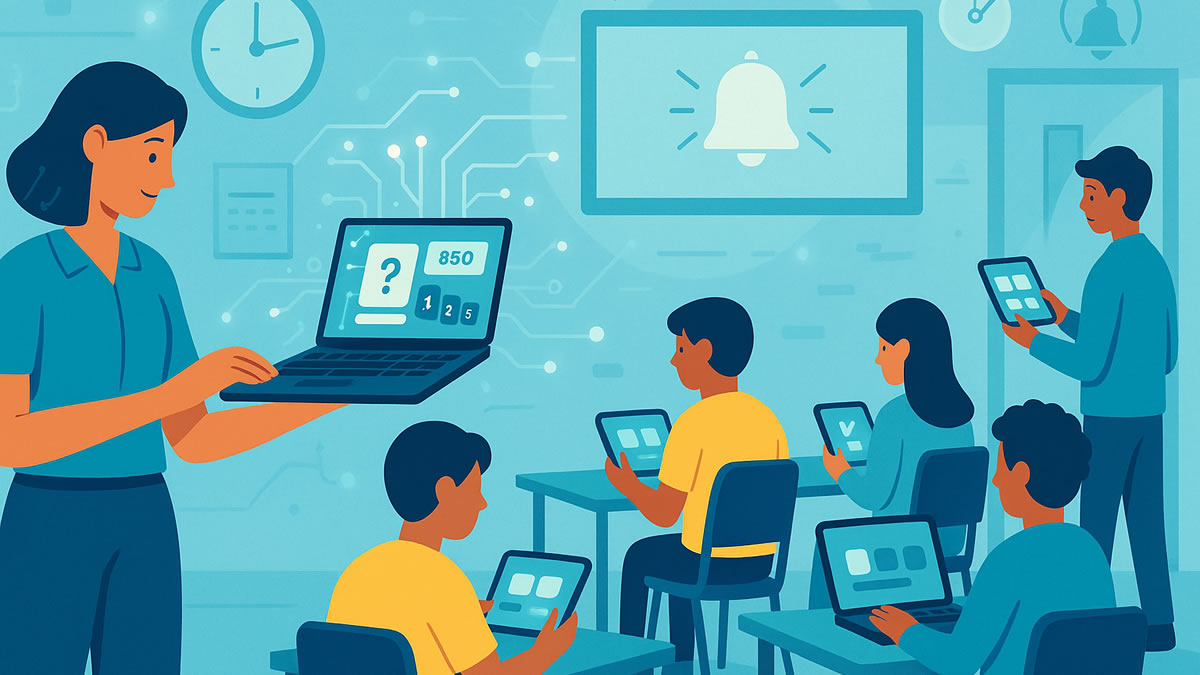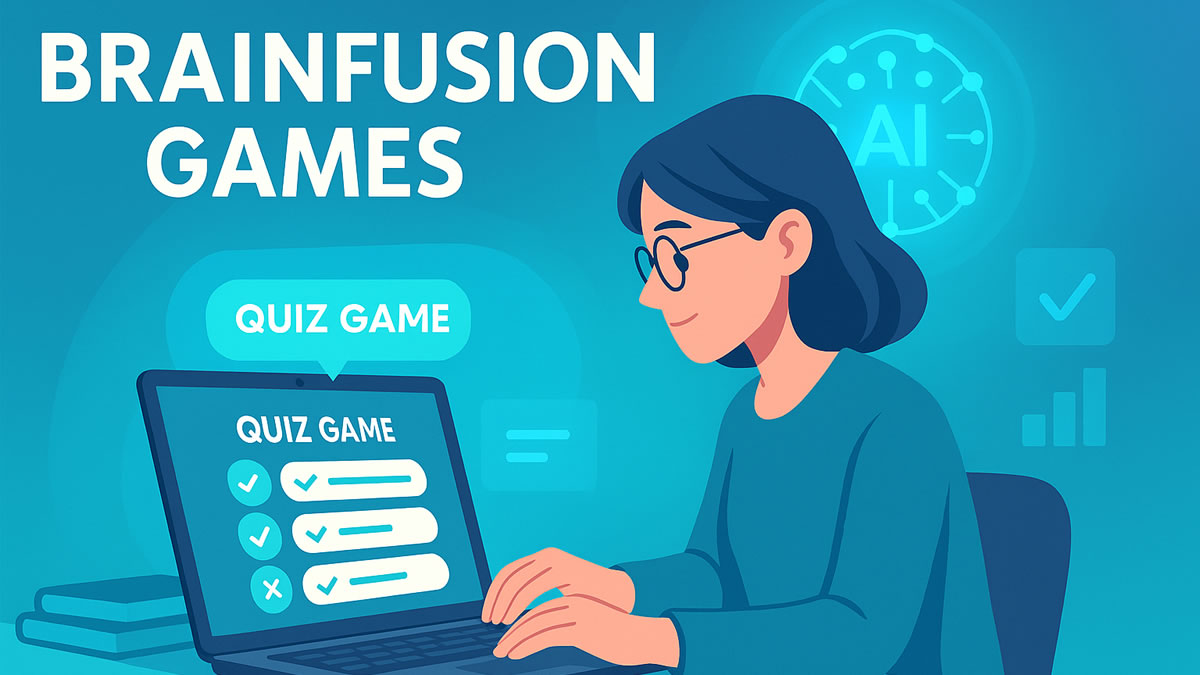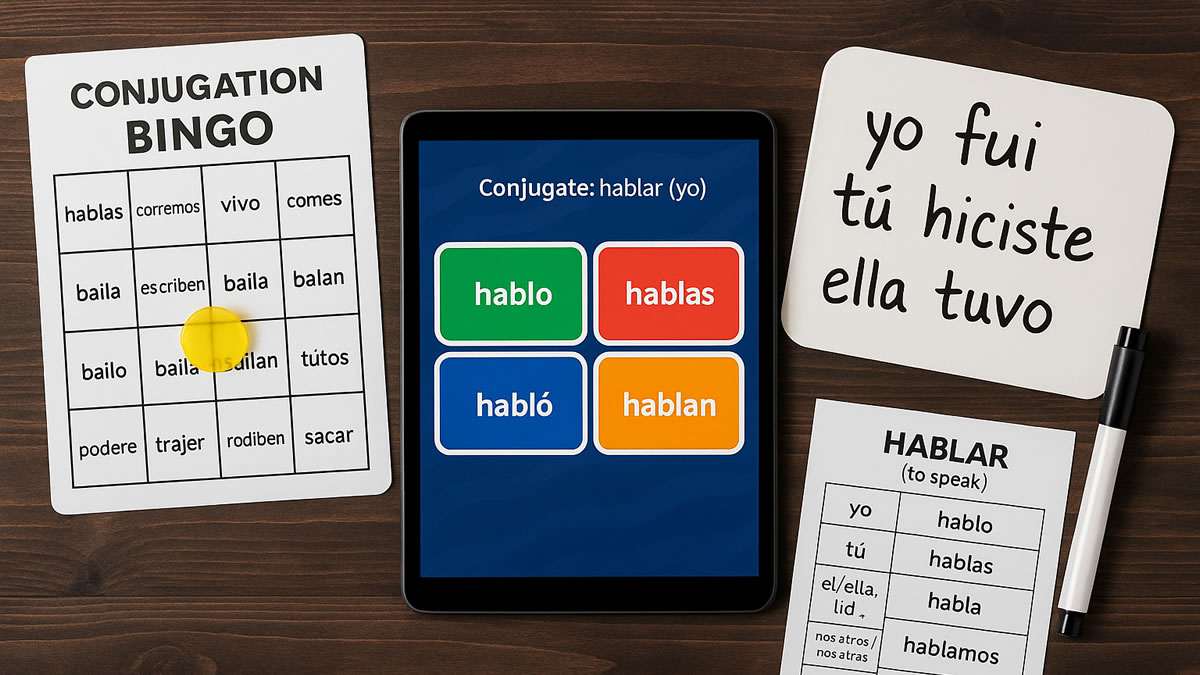How to Use Game-Based Learning for Bell Ringers
The bell rings, students trickle in, and you’ve got five minutes to either lose them to small talk—or hook their brains for the next 45.
That’s where bell-ringers earn their keep.
Instead of another worksheet on the projector, game-based bell-ringers let you review prior learning, preview new content, and calm the chaos—all while students feel like they’re “just playing a quick game.”
In this guide, you’ll learn how to turn those first 5–10 minutes into high-impact, low-prep game time using BrainFusion Games.
Why Bell-Ringers Matter More Than We Admit
Bell-ringers are small, but they’re mighty. A good opener can:
- Set the tone for focus and participation
- Activate prior knowledge so new content sticks
- Provide quick formative data on yesterday’s lesson
- Reduce transition chaos and side conversations
From a learning-science perspective, those first minutes are perfect for:
Retrieval practice
Having students recall information from memory strengthens long-term retention and makes new learning easier.
Spaced repetition
Revisiting content from last week or last unit in short bursts helps it move into long-term memory.
Lowering anxiety
Low-stakes practice at the start of class builds confidence and makes later assessments feel less intimidating.
Traditional bell-ringers can do some of this—but game-based bell-ringers supercharge it by adding motivation, instant feedback, and just enough fun to pull students in.
Why Games Work So Well in the First 5 Minutes
You don’t have to turn your whole class into a game to get the benefits. A 5-minute warmup game taps into:
- Curiosity: “What are we playing today?”
- Dopamine: Small wins, points, streaks
- Immediate feedback: No more stacks of warm-up sheets
- Routine: “Enter → join game → start” becomes calming and predictable
With BrainFusion Games, you can:
- Use one question set across multiple game modes
- Generate new questions with AI in under a minute
- Get question-level analytics to guide instruction
💡 Pro Tip: Keep the Format Stable, Change the Content
Use the same game mode most days (like Quiz Quest), but rotate the question topics. Students learn the routine quickly while you save time and reduce confusion.
5 Ways to Turn Bell-Ringers Into Games
1. Prior-Knowledge Check (Mondays)
Goal: Preview new units.
How it works:
- Ask BrainFusion to generate 10 preview questions.
- Run a quick Quiz Quest game.
- Check the accuracy report.
Why it works:
You see misconceptions before they become barriers.
2. Spiral Review from Past Units
Goal: Keep old skills fresh.
How it works:
- Build small review sets for each past unit.
- Use interleaving to mix topics.
- Play 5–7 questions at the start of class.
Why it works:
Interleaving strengthens retention by forcing students to choose the right strategy for each question.
3. Vocabulary Lightning Rounds
Goal: Build automatic recognition of key terms.
How it works:
- Paste your vocab list into BrainFusion.
- Generate definitions, examples, synonyms, and antonyms.
- Rotate between Ninja Fruit Frenzy and Flashcard Fusion.
Variations:
- Identify the incorrect definition
- Choose the best synonym
- Use audio cues for pronunciation
4. Data-Driven ReTeach Lists
Goal: Formatively assess and correct misunderstandings.
How it works:
- Identify 3–5 missed concepts from the prior day.
- Create or reuse questions.
- Start class with a focused mini-game.
Why it works:
Students get immediate, low-stakes practice on what they struggled with yesterday.
5. Student-Created Bell-Ringer Games
Goal: Build ownership and deeper understanding.
How it works:
- Assign topics to individuals or groups.
- Have them create 5 questions each.
- Combine them into a class game.
Why it works:
Writing questions requires deeper thinking and boosts engagement when the class plays.
⚠️ Watch Out for Tricky Wording
Model clear question writing—avoid trick questions or overly complex phrasing.
Best Practices for Game-Based Bell-Ringers
1. Keep It Short
Aim for 3–7 questions or 5 minutes total.
2. Align with a Purpose
Is it review? Preview? Reteach?
3. Use Data Lightly
Glance at the session report and adjust tomorrow’s plan as needed.
4. Vary Cognitive Demand
Use recall, application, and error-analysis questions.
5. Make It Accessible
Use clear text, audio support when needed, and clutter-free screens.
Common Mistakes to Avoid
❌ Bell-ringers that stretch into 20 minutes
Keep them short by design.
❌ Only using speed-based modes
Rotate in calmer modes like Flashcard Fusion.
❌ Never reviewing the most-missed question
Take one minute to address it.
❌ Using topics unrelated to the lesson
Avoid random trivia—connect to learning goals.
A Sample Week of Game-Based Bell-Ringers
Monday – Prior-Knowledge Check
Quiz Quest on the new unit
Tuesday – Spiral Review
Mixed-topic review game
Wednesday – Reteach Mini-Game
Based on yesterday’s misconceptions
Thursday – Vocabulary Lightning Round
Ninja Fruit Frenzy
Friday – Student-Created Game
Artifact Adventure
Getting Started with BrainFusion for Bell-Ringers
- Start with one class and one day a week.
- Convert an existing warm-up into a BrainFusion game.
- Build student routine with one game mode.
- Expand into interleaving and AI-generated questions.
Turn Tomorrow’s Bell-Ringer Into a Game
Create an AI-powered bell-ringer game in minutes and start class with focus, fun, and meaningful data.





